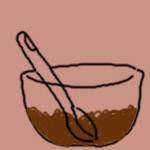| |
|

 |
 page
2 page
2 |
The tradition of giving chocolates as a gift
of love and endearment also originated from Spain. In 1615, the Spanish
princess Maria Theresa gave her fiancé Louis XIV a gift of chocolate
in an ornate wrapping, a symbolic gesture which continues to the present
day.
The first chocolate boutique opened in London
in 1657. Because of its incredibly expensive price, chocolate was considered
a beverage for the elite class. Cocoa was used as acceptable currency throughout
Europe and the New World. By 1730, the price had declined enough for chocolate
to be available to all classes, and this delicious confection continued
to spread. Processing improved, and chocolate drinks grew richer and sweeter.
Finally, the Industrial Revolution brought about the mass production of
chocolate, and it became more readily available to the masses, including
the American colonies, where it was introduced in 1765.
Chocolate was considered only a beverage for
centuries, predominantly for men. In the seventeenth century, it became
recognized as an appropriate drink for children. Many things were added
to chocolate for different flavors: milk, wine, beer, sweeteners, and spices.
Drinking chocolate was considered a very fashionable social event.
Eating chocolate was introduced in 1674 in
rolls and cakes, served in various chocolate emporiums. In approximately
1847, a British confectioner sold a "Chocolat Delicieux a Manger" -- the
first chocolate bar. It wasn't until 1876 that Daniel Peter of Switzerland
perfected the making of milk chocolate. He brought his creation to a Swiss
firm that today is the world's largest producer of chocolate: Nestle. In
1913 another Swiss, Jules Sechaud, introduced a process for manufacturing
filled chocolates, solidifying the Swiss reputation for fine chocolates.
Cacao trees grow wild in the tropics of the
Americas. Most of the trees have been found within 10°north or
south of the equator. The cacao tree can be cultivated in many different
regions, as long as the land is no higher than 3,000 feet in elevation
and the temperature is approximately 80°F year-round and never falls
below 60°F.
Next Page
|
|
|
|
|
|
|



